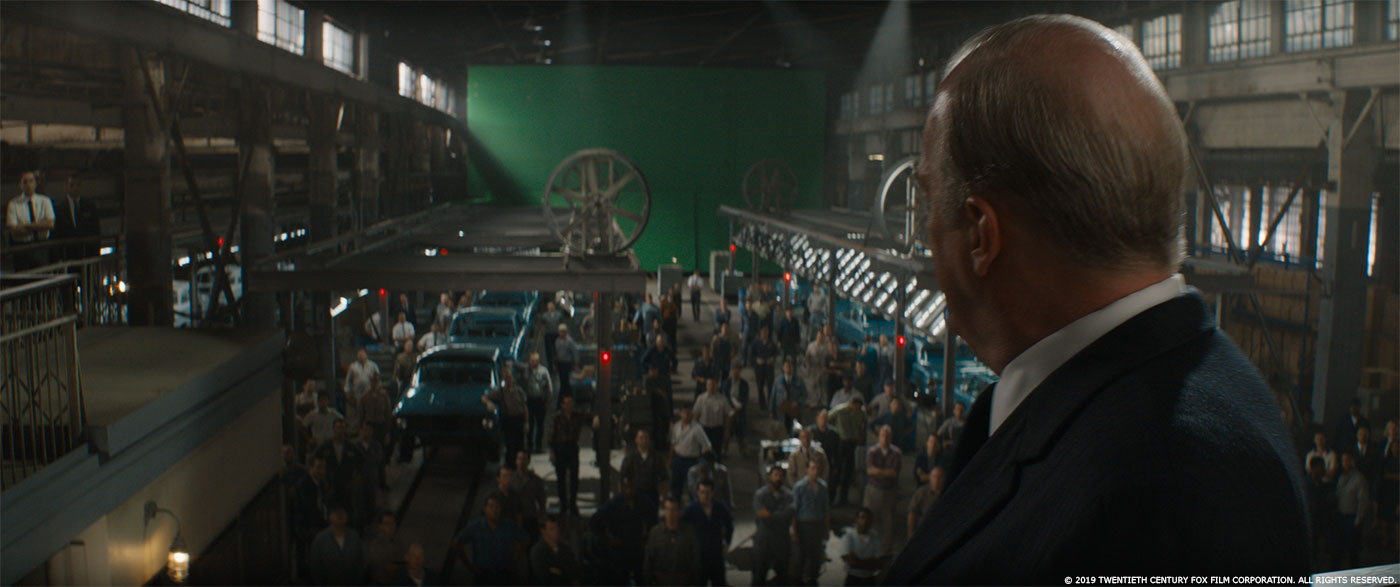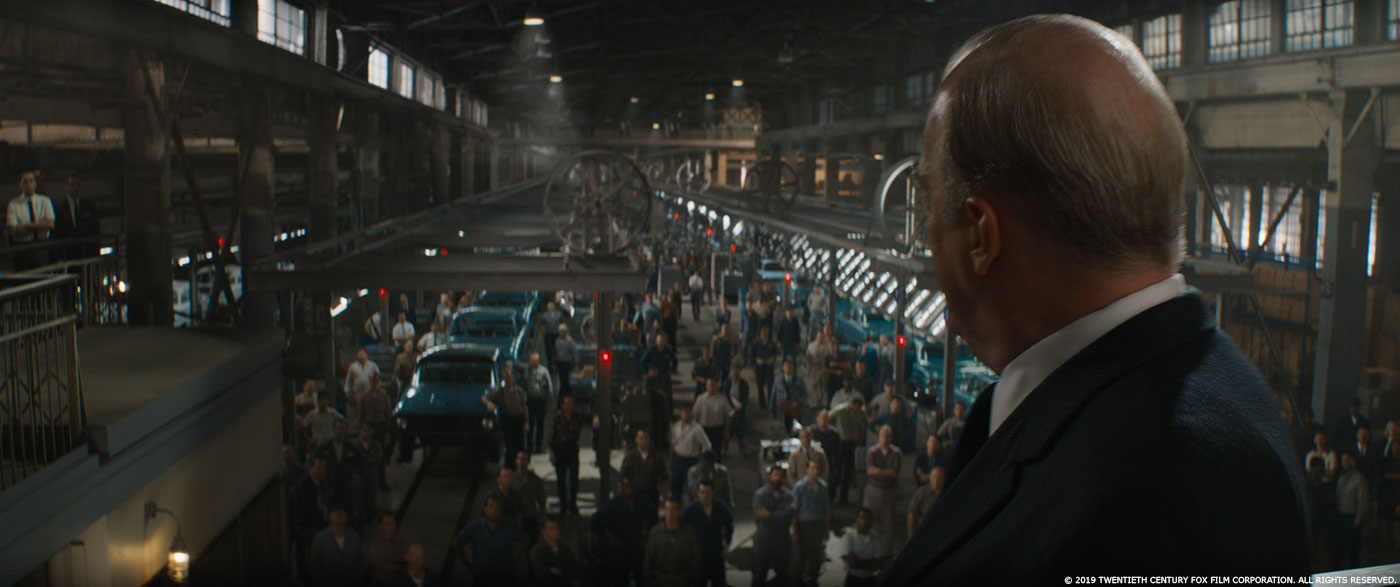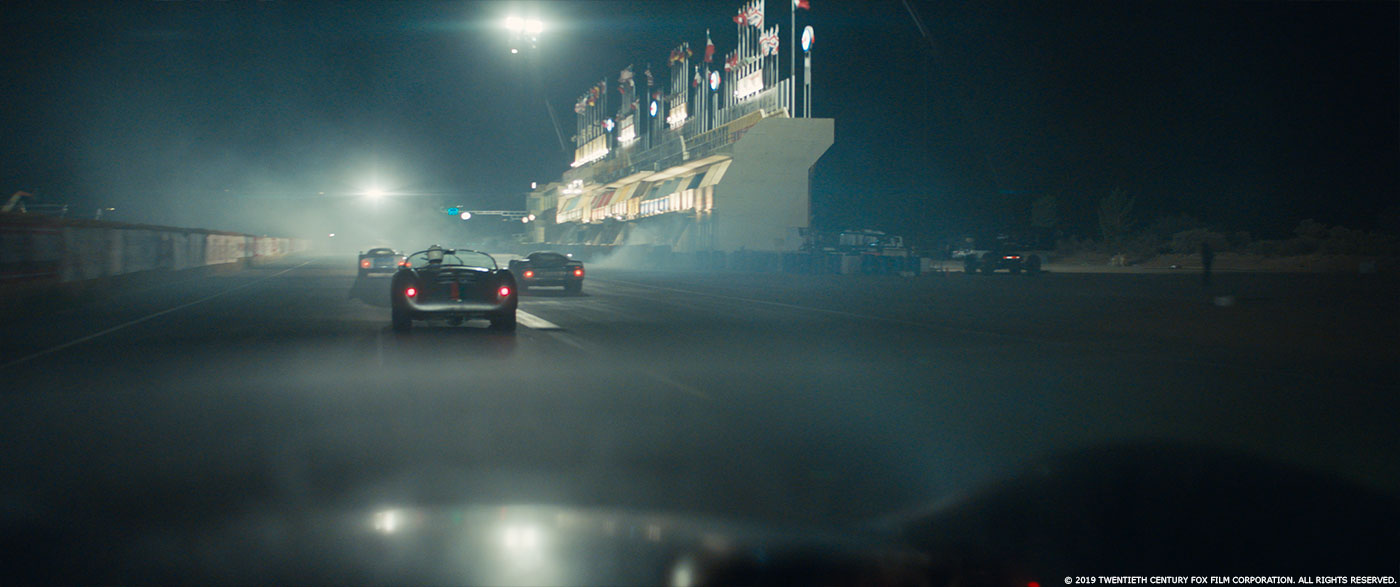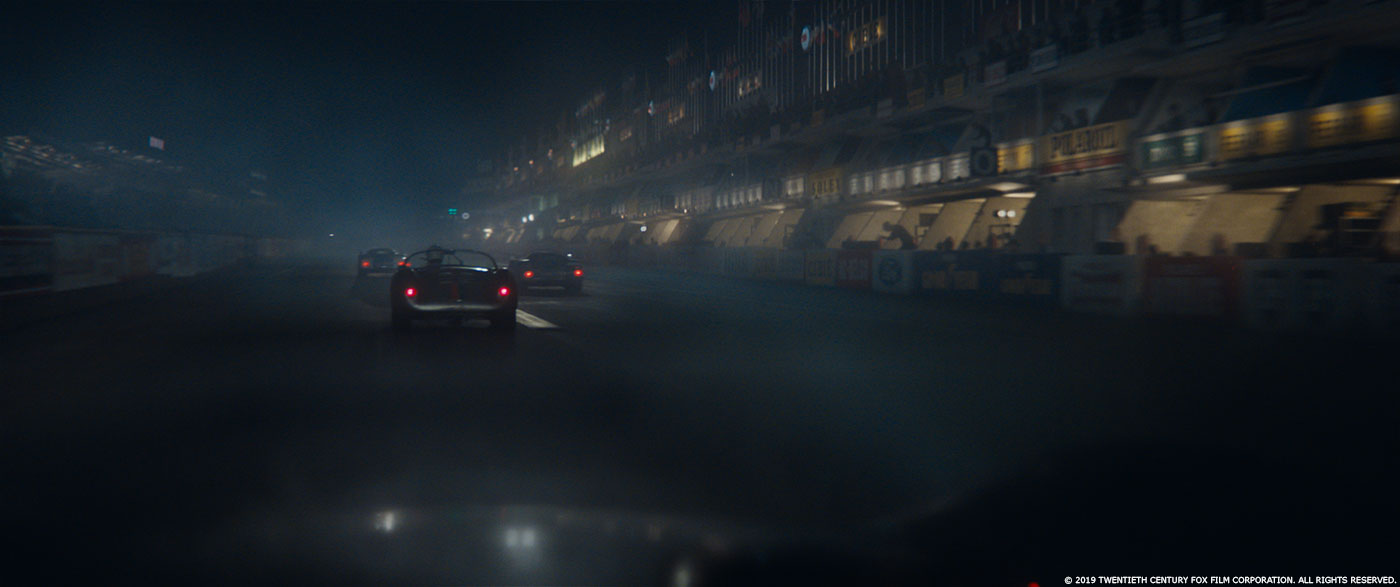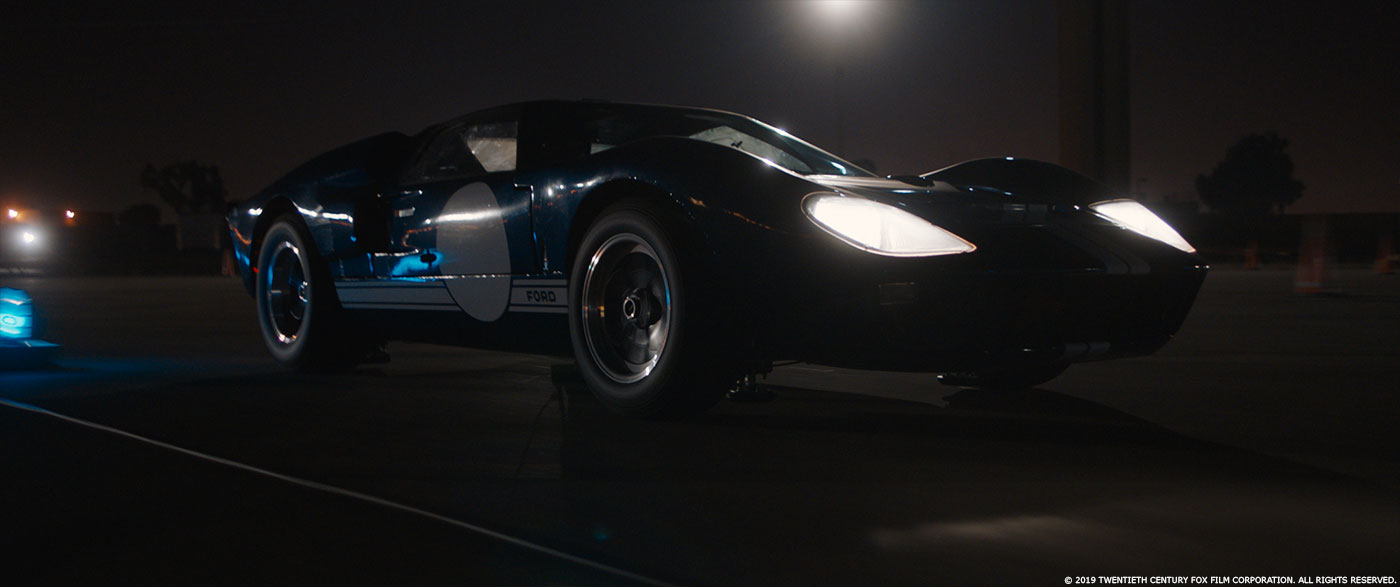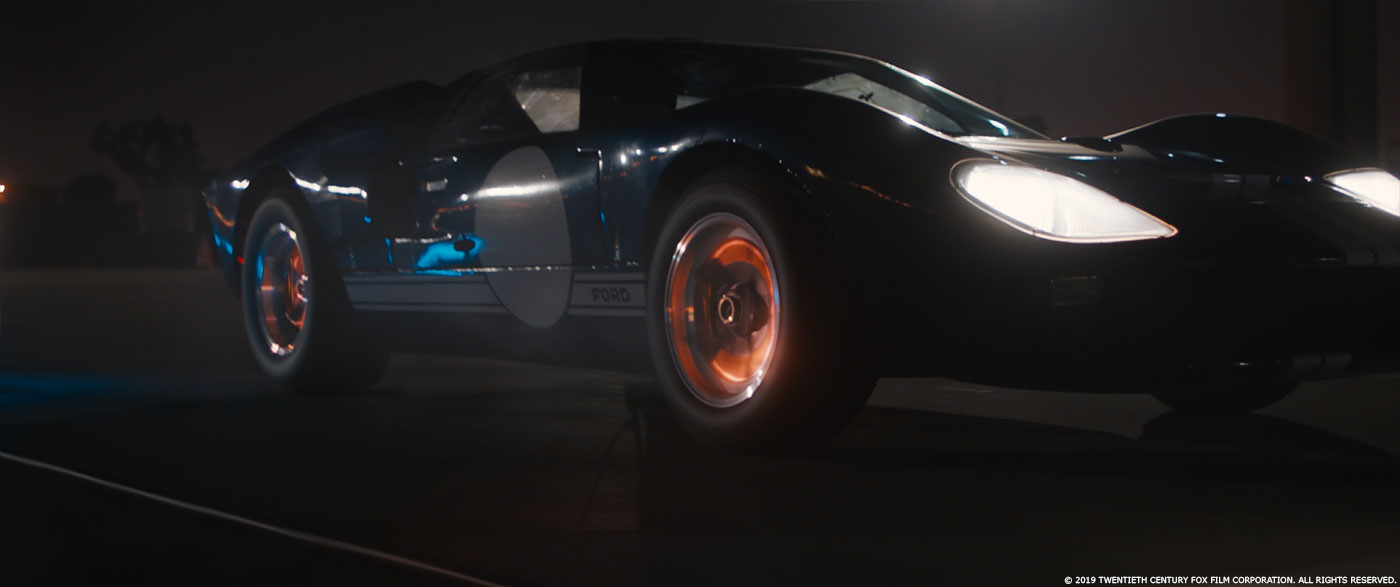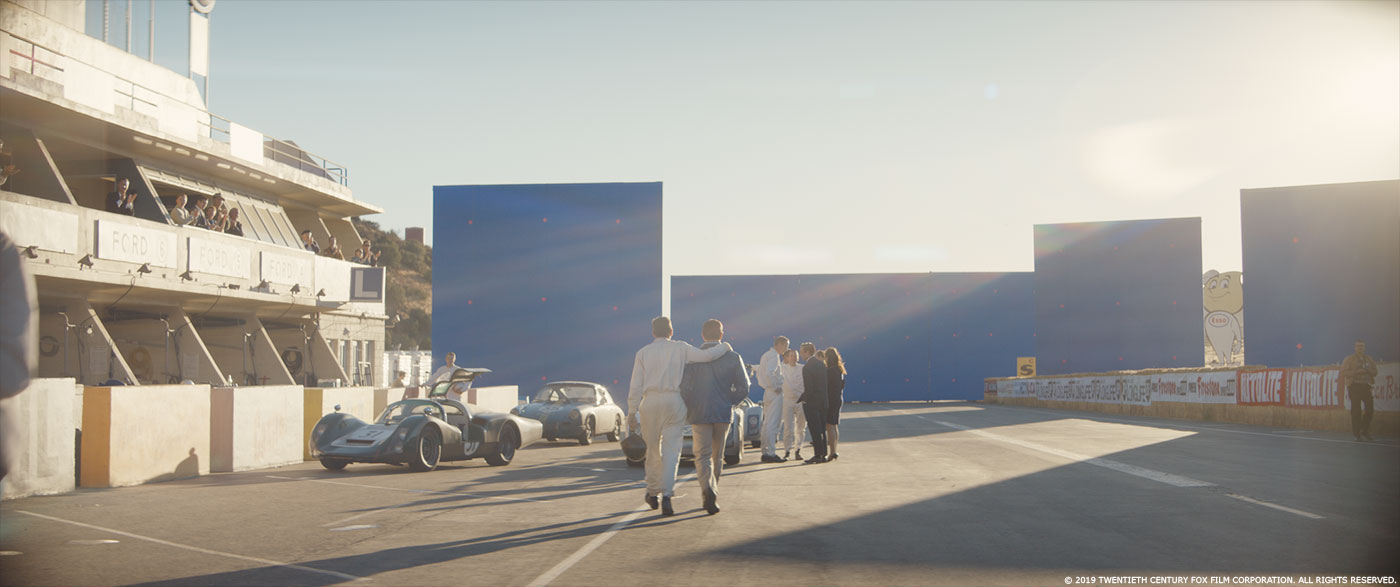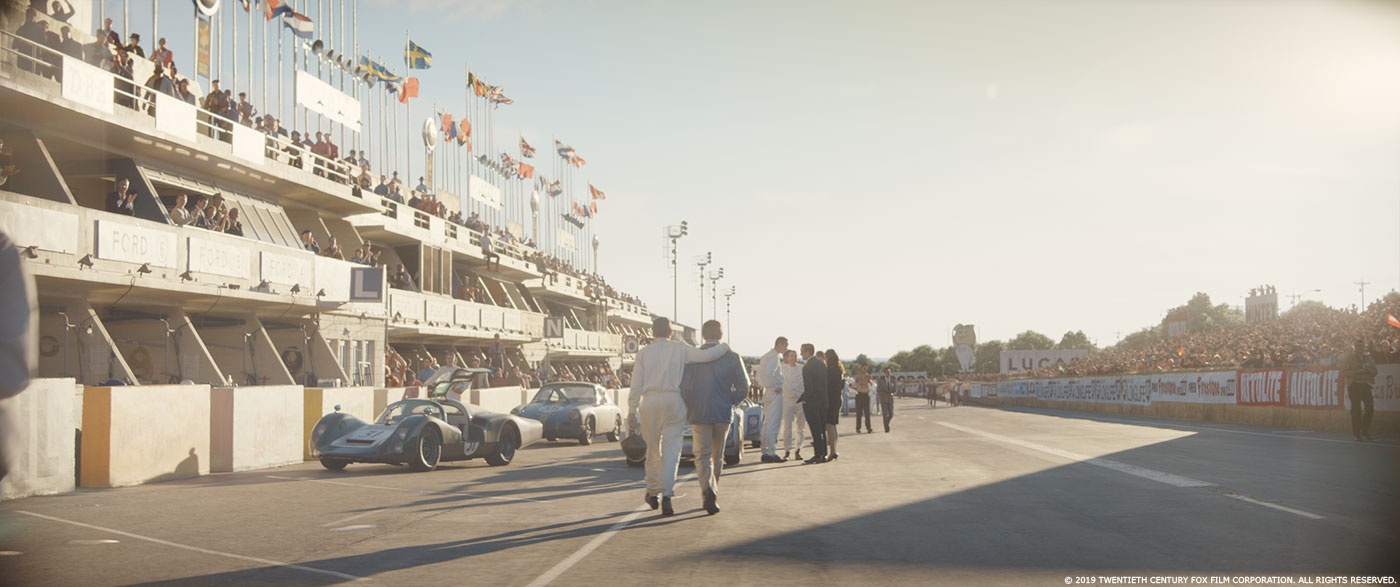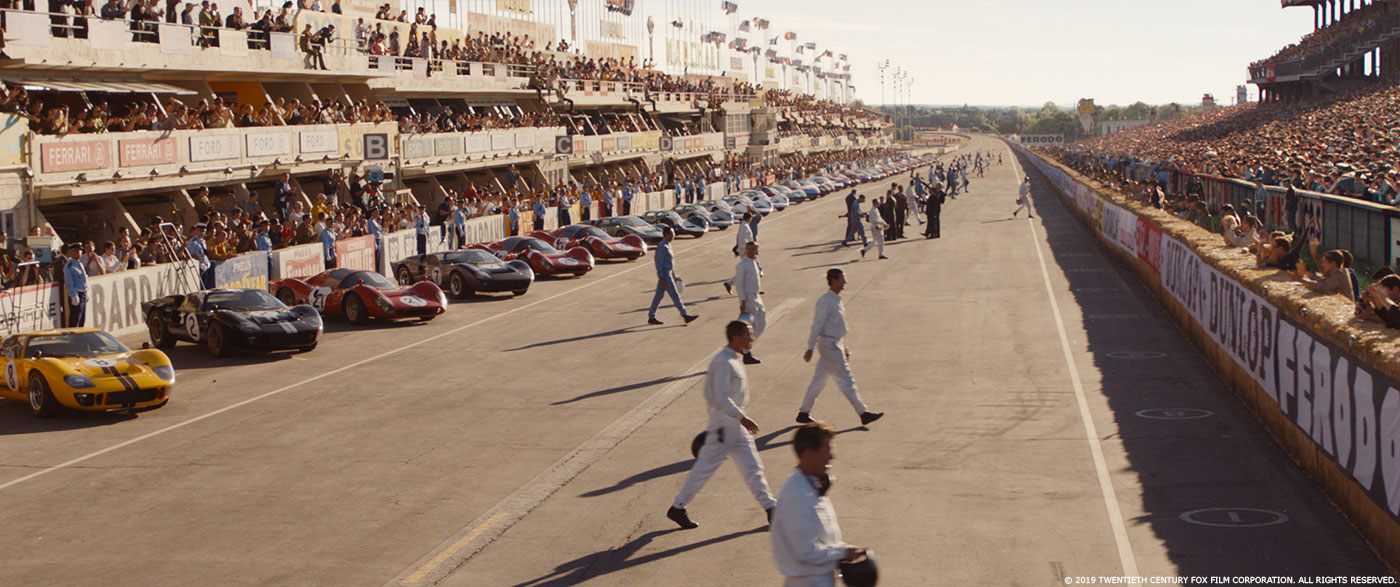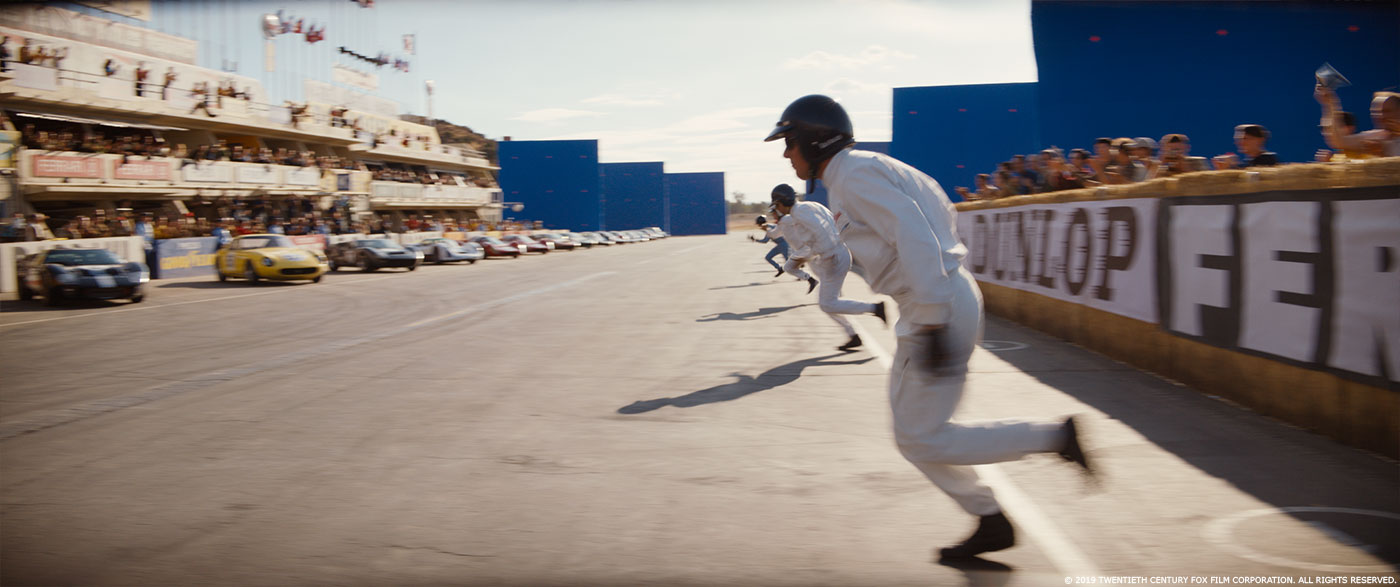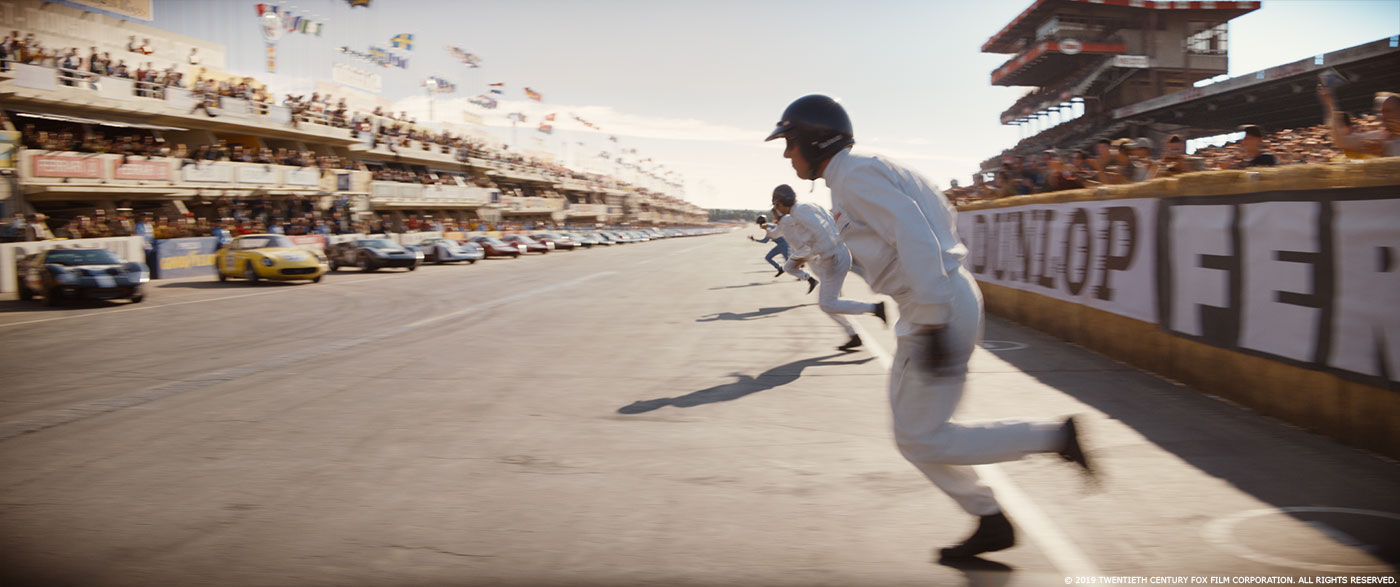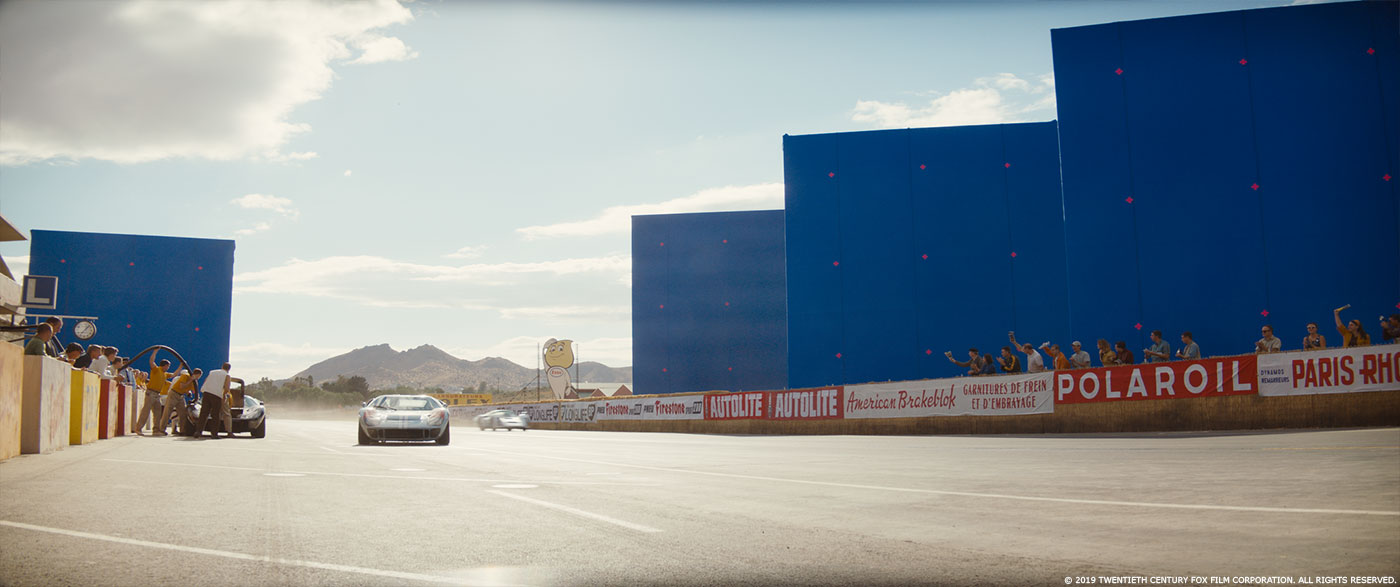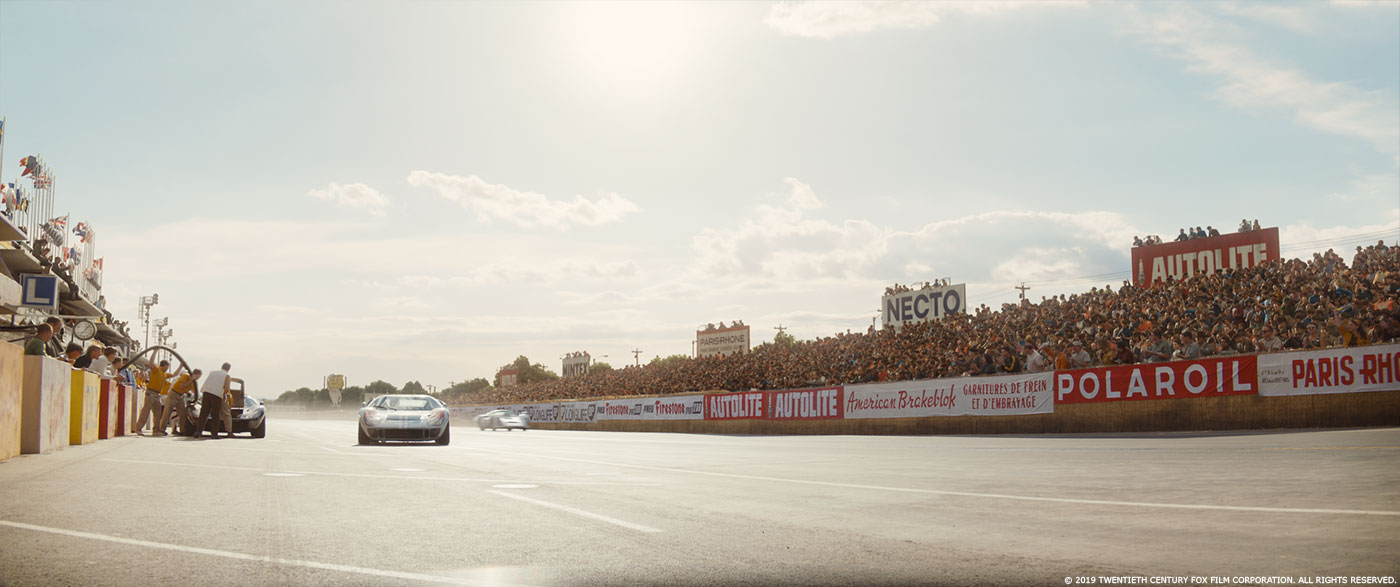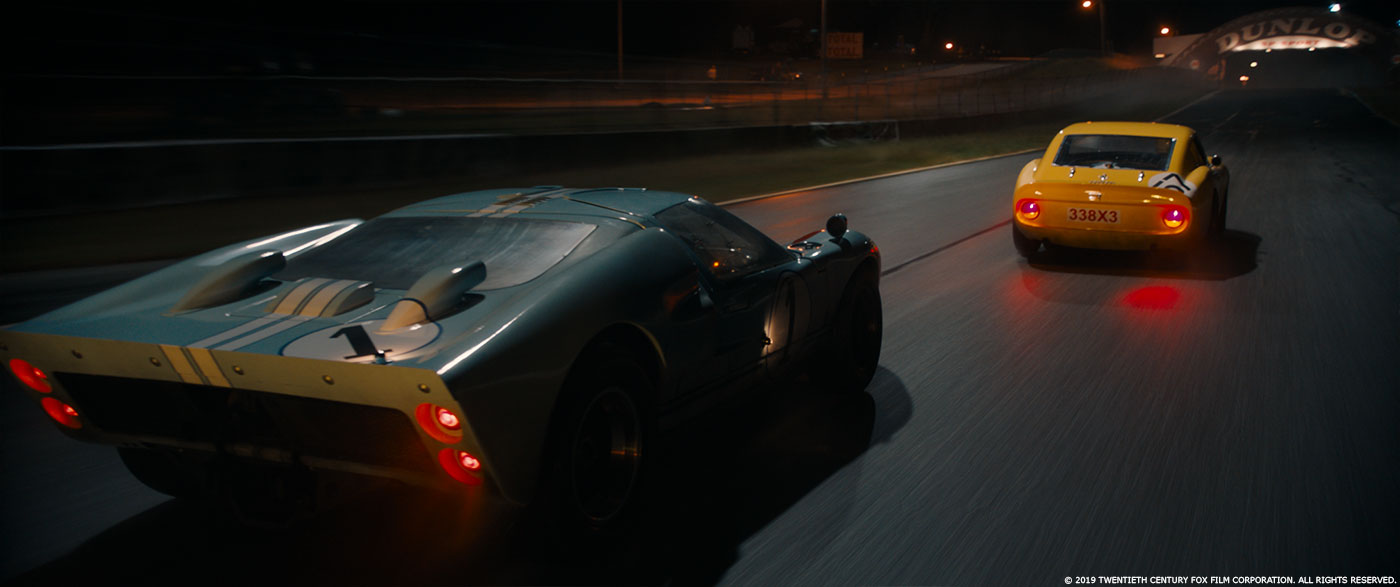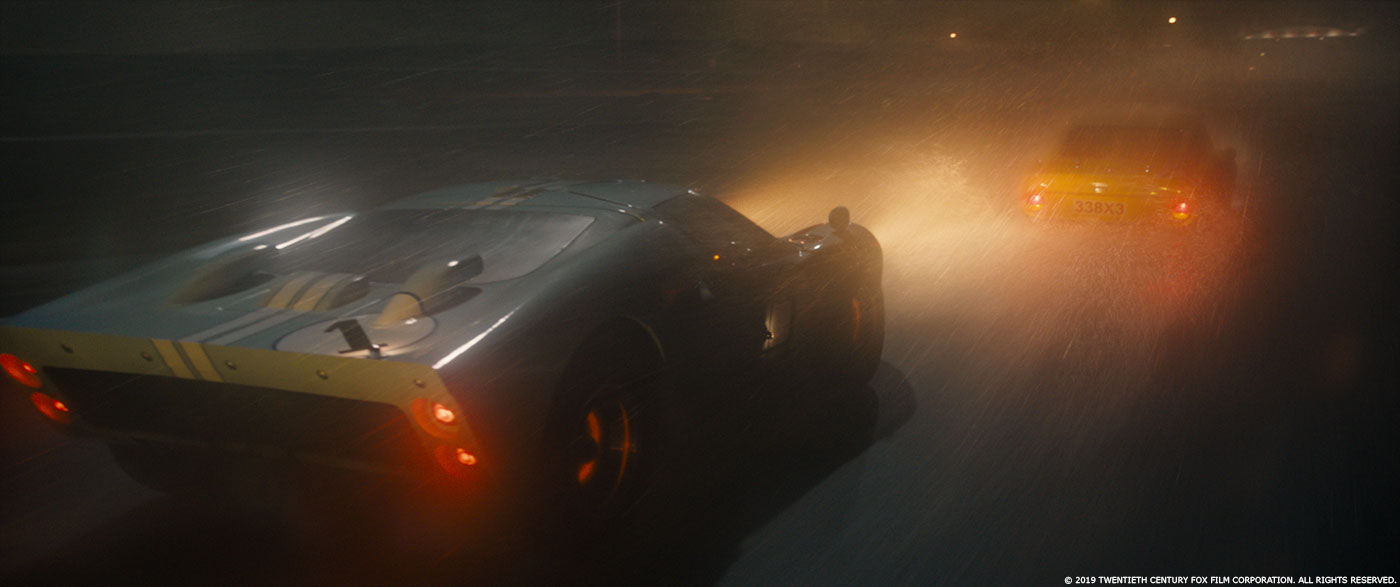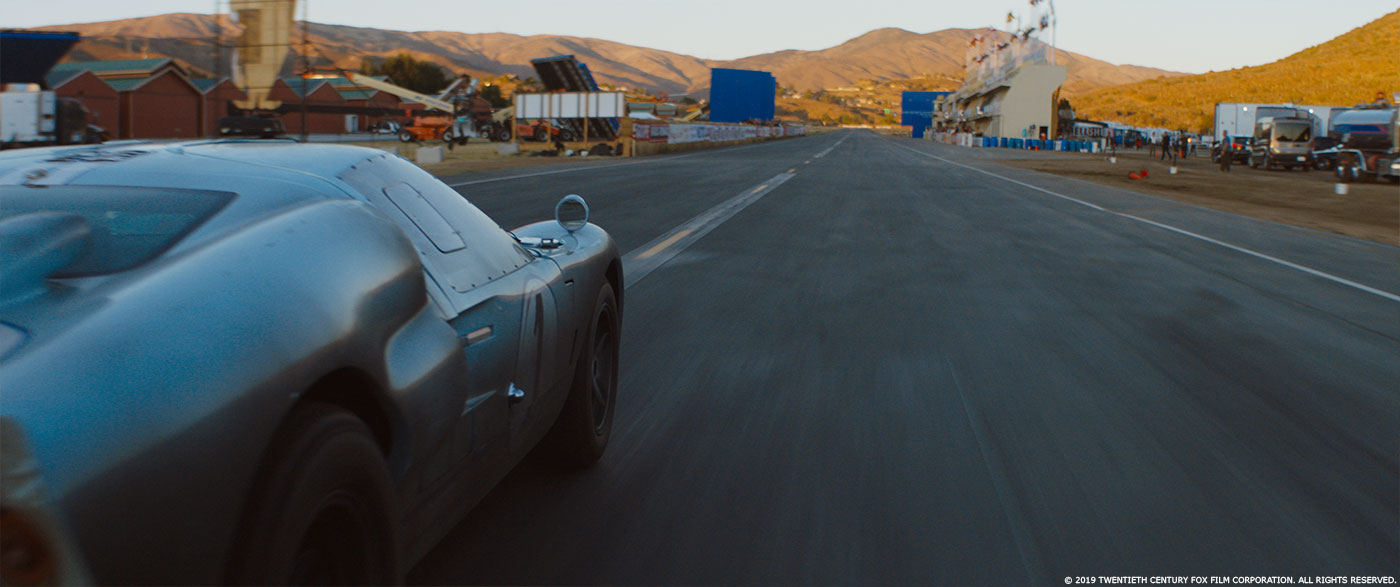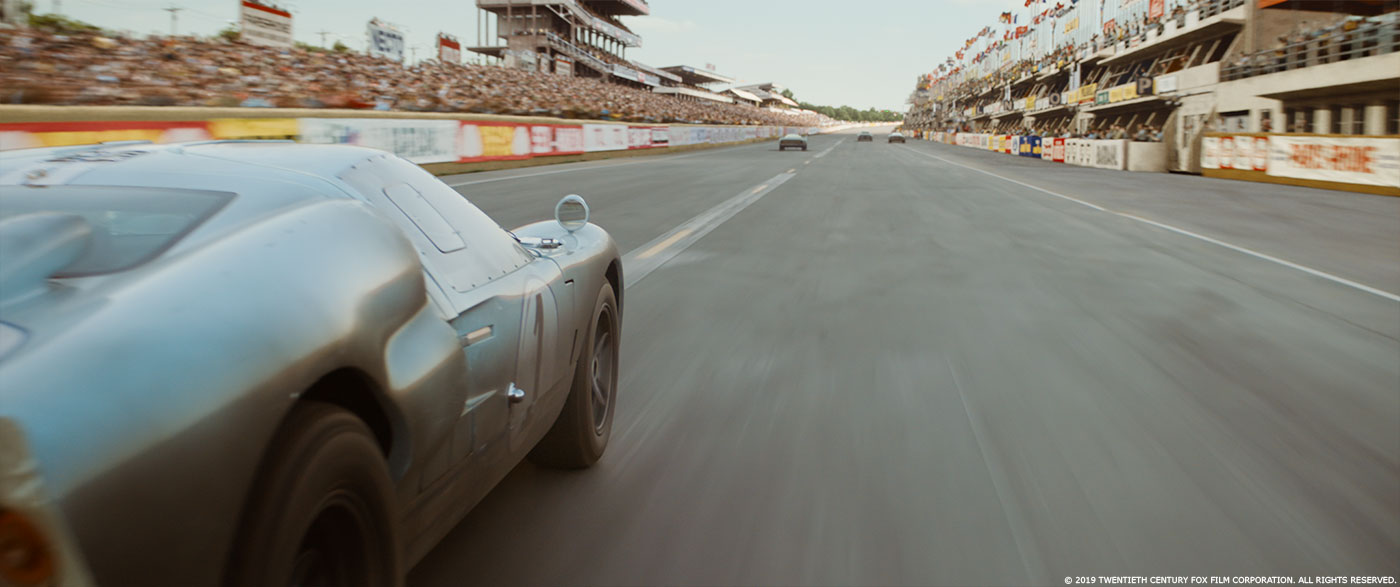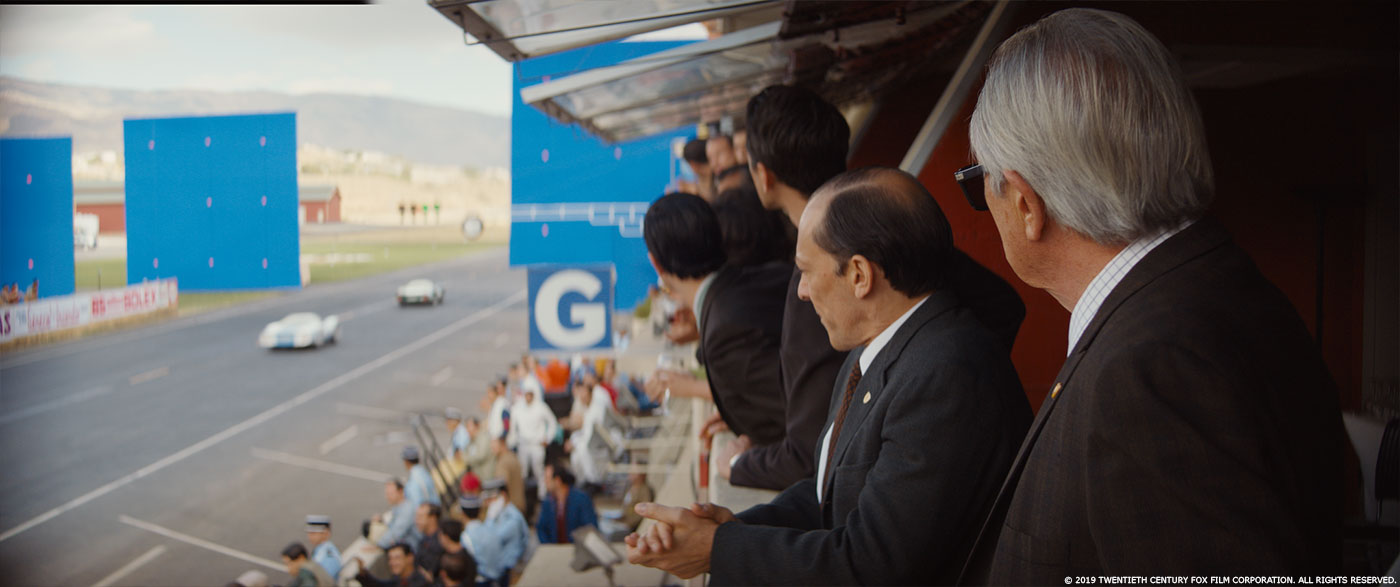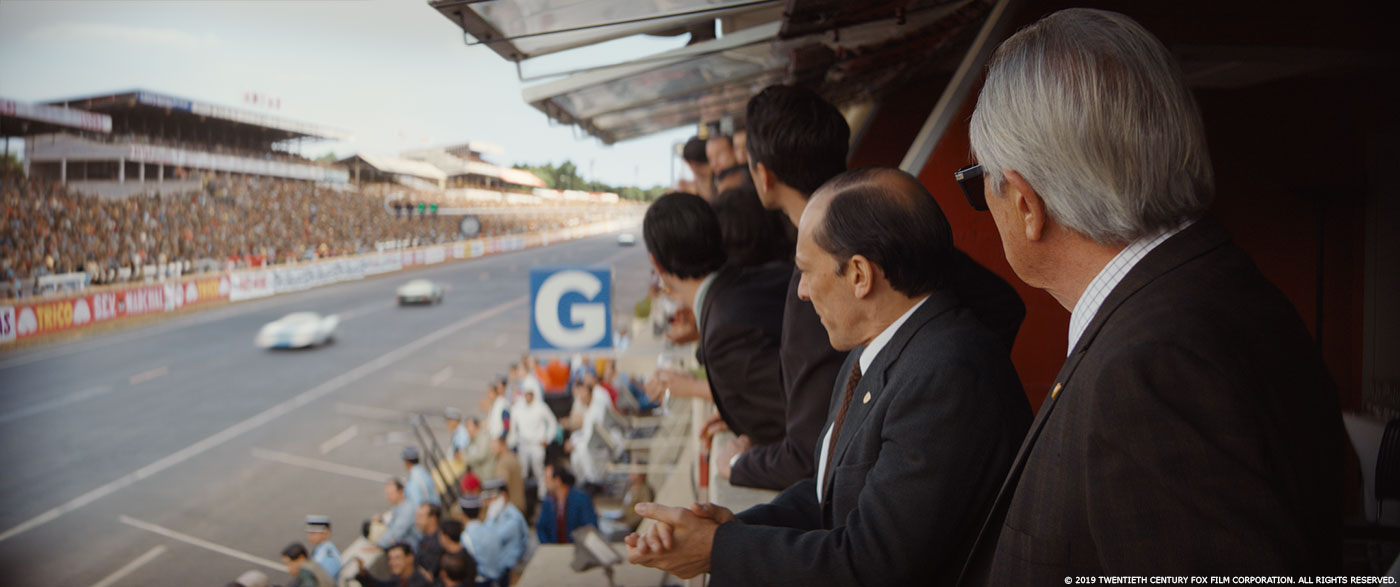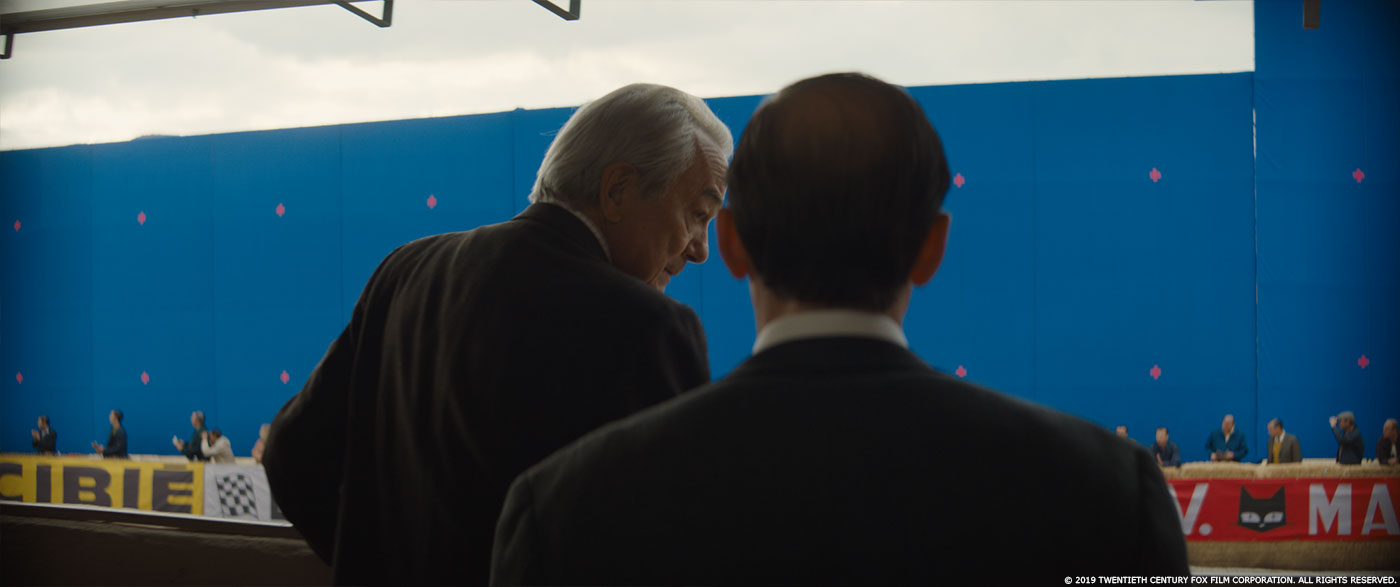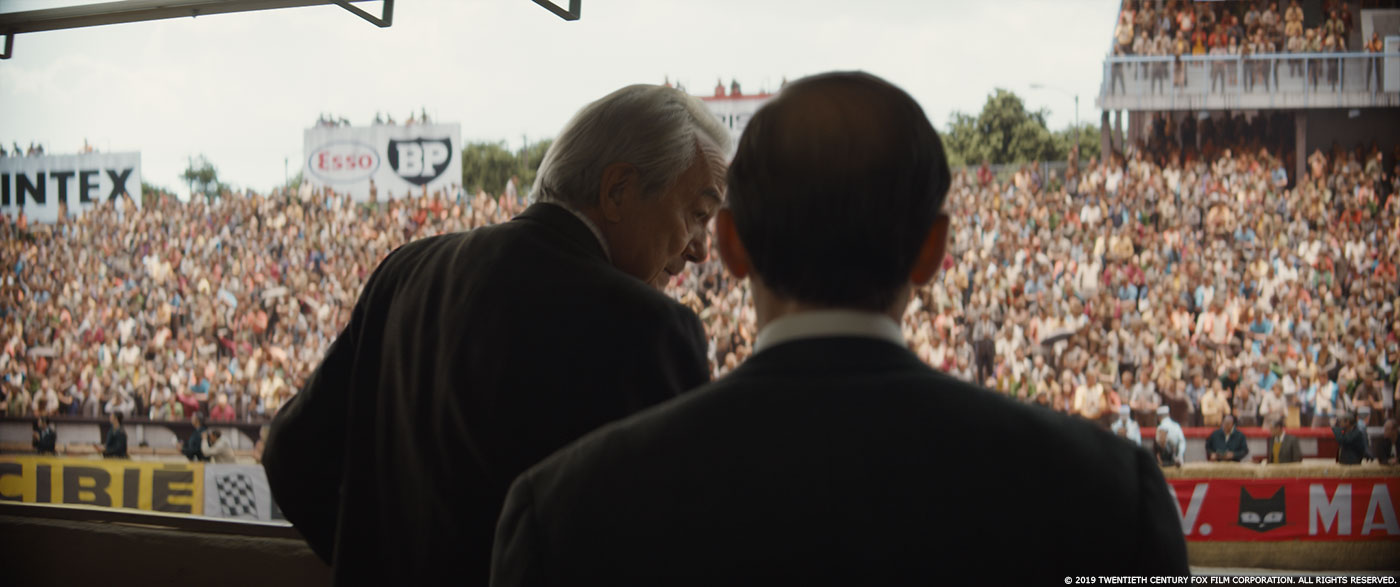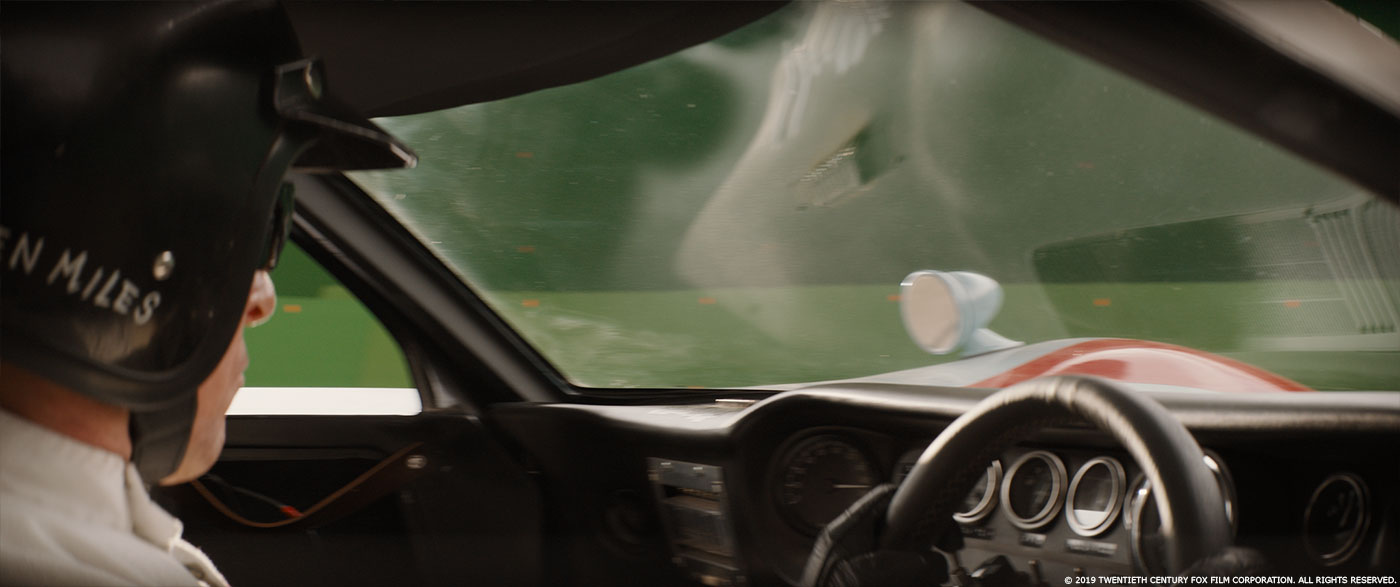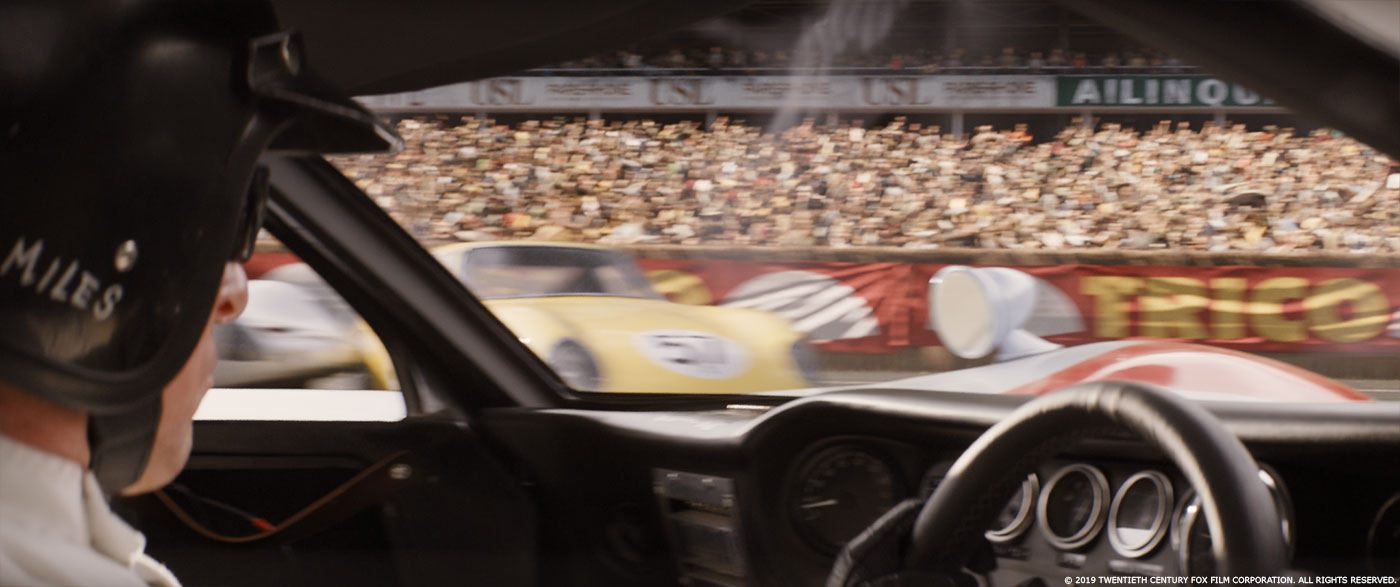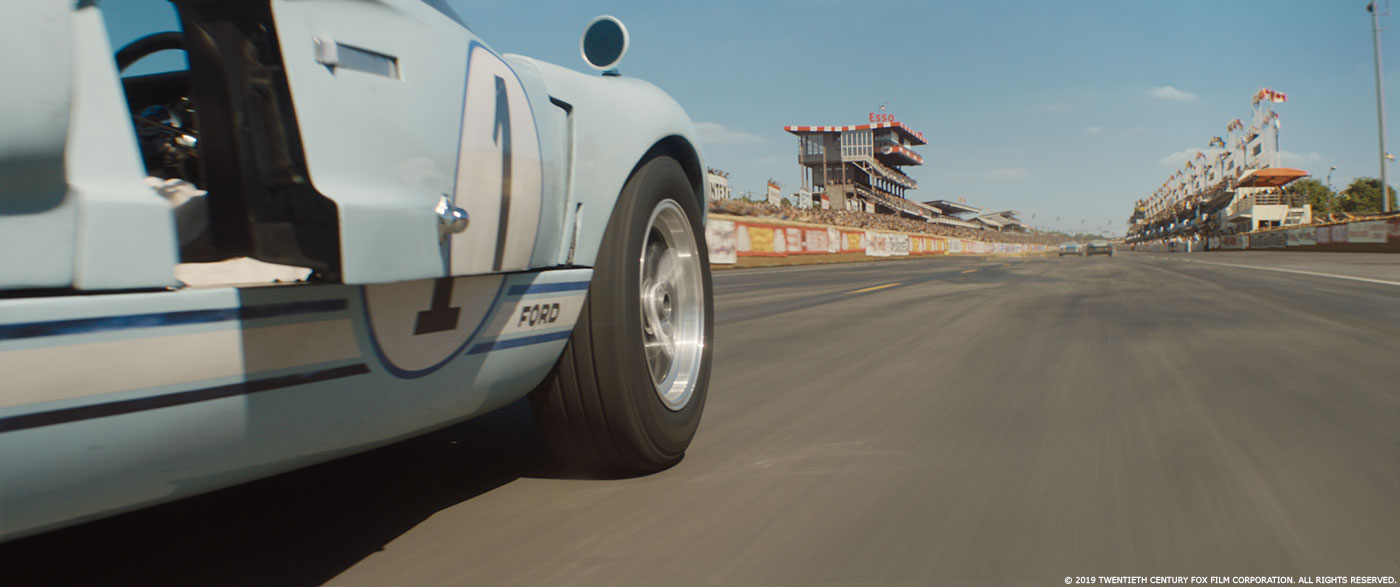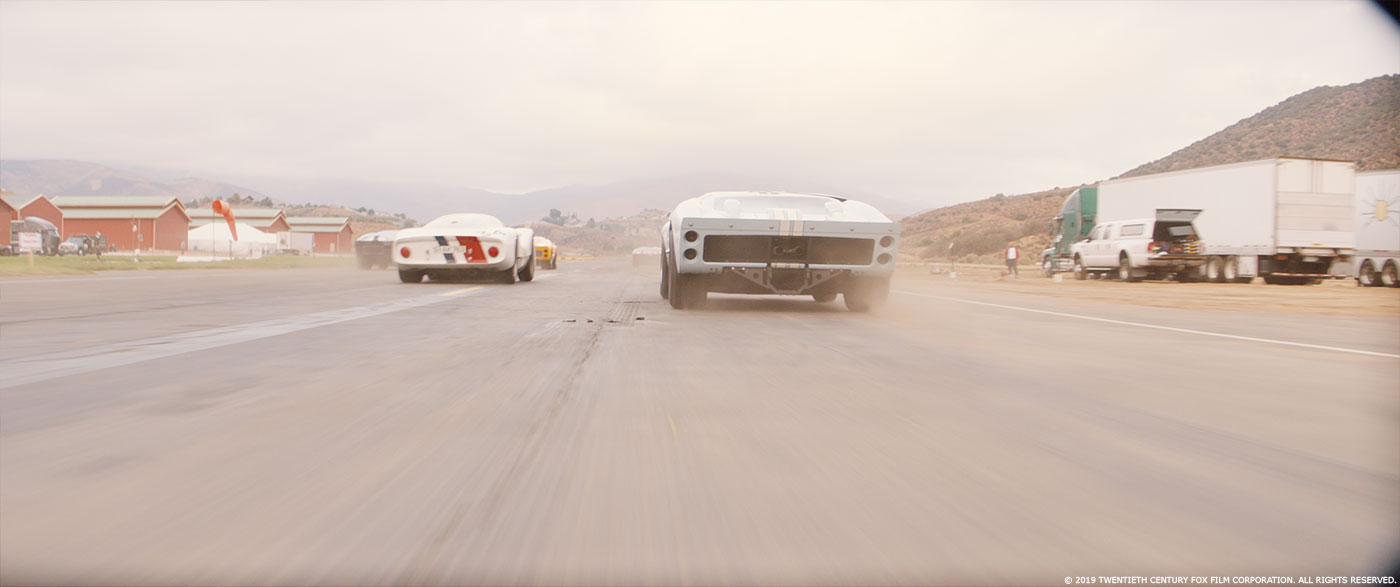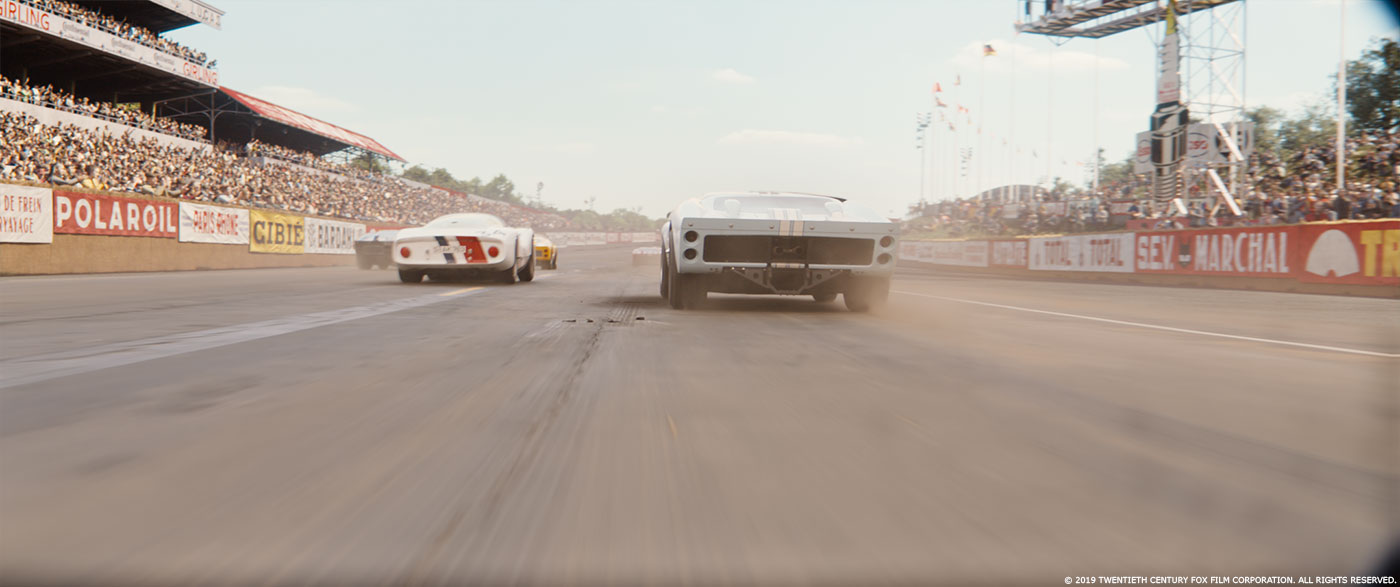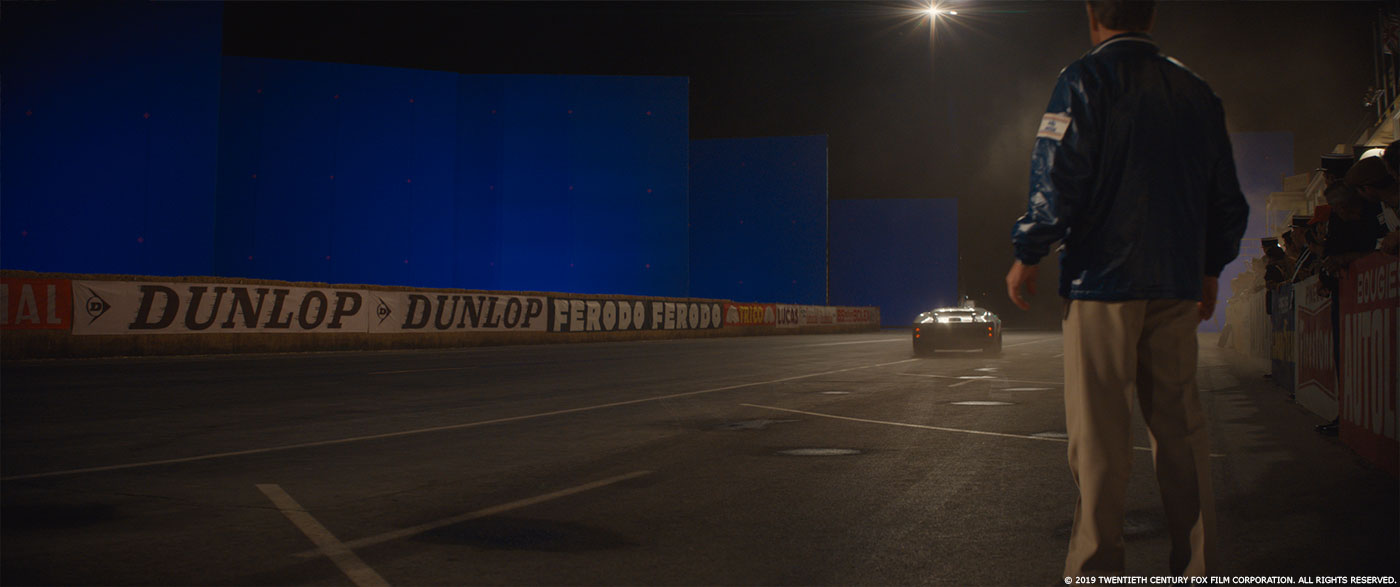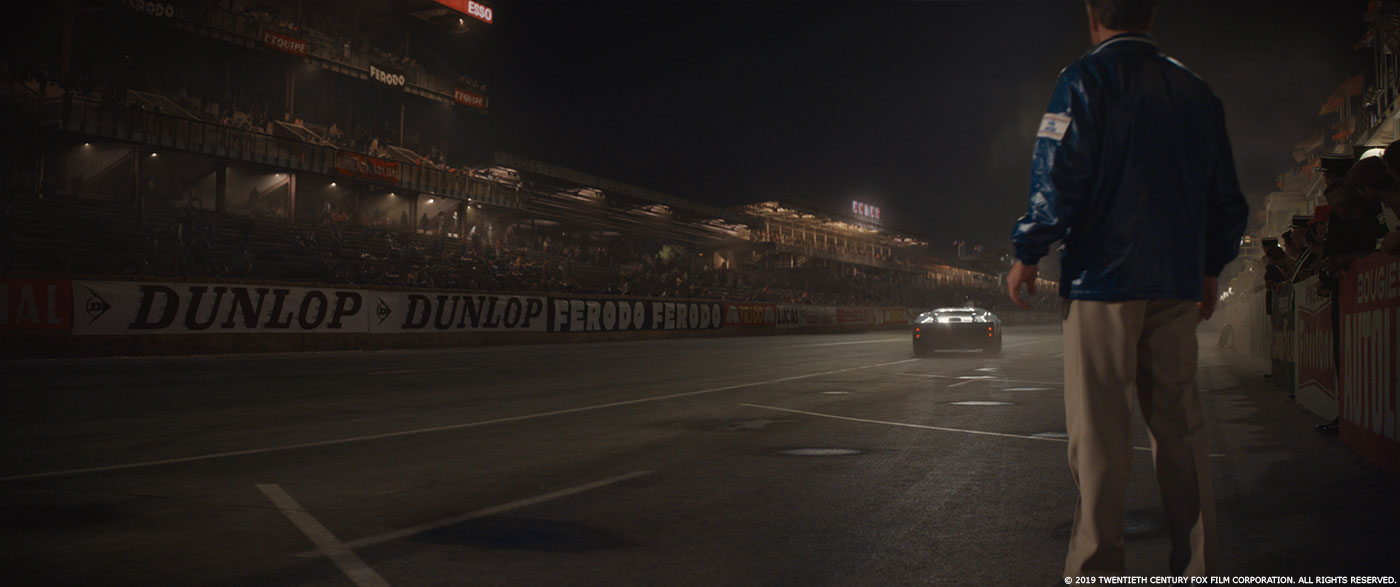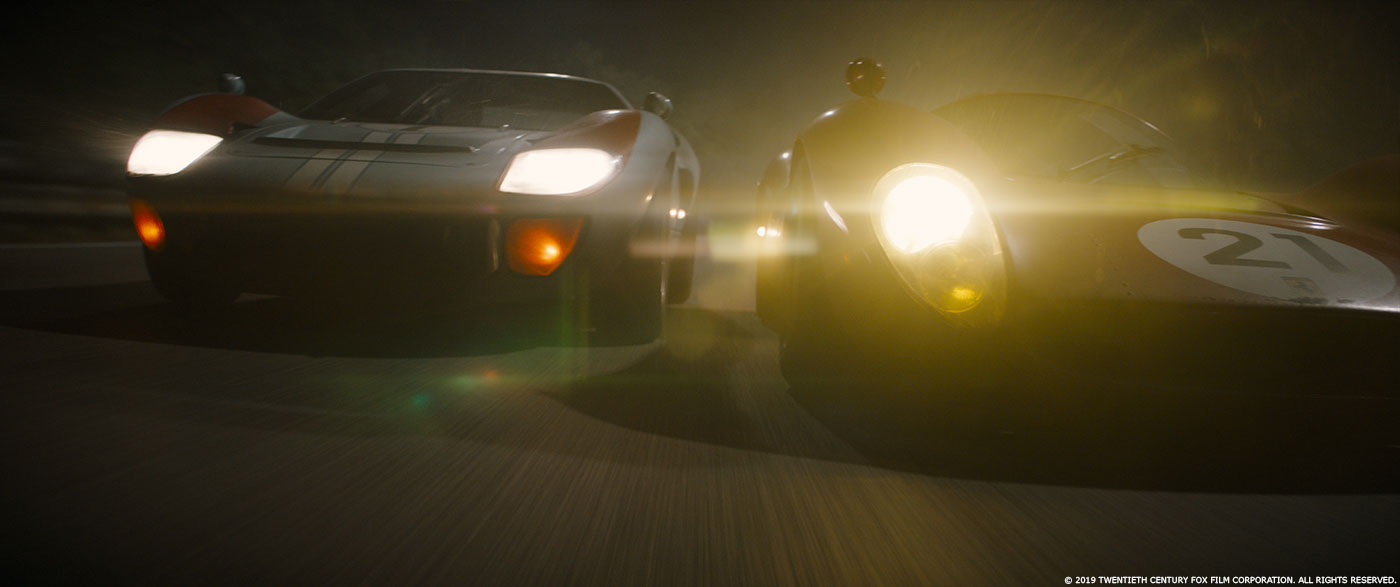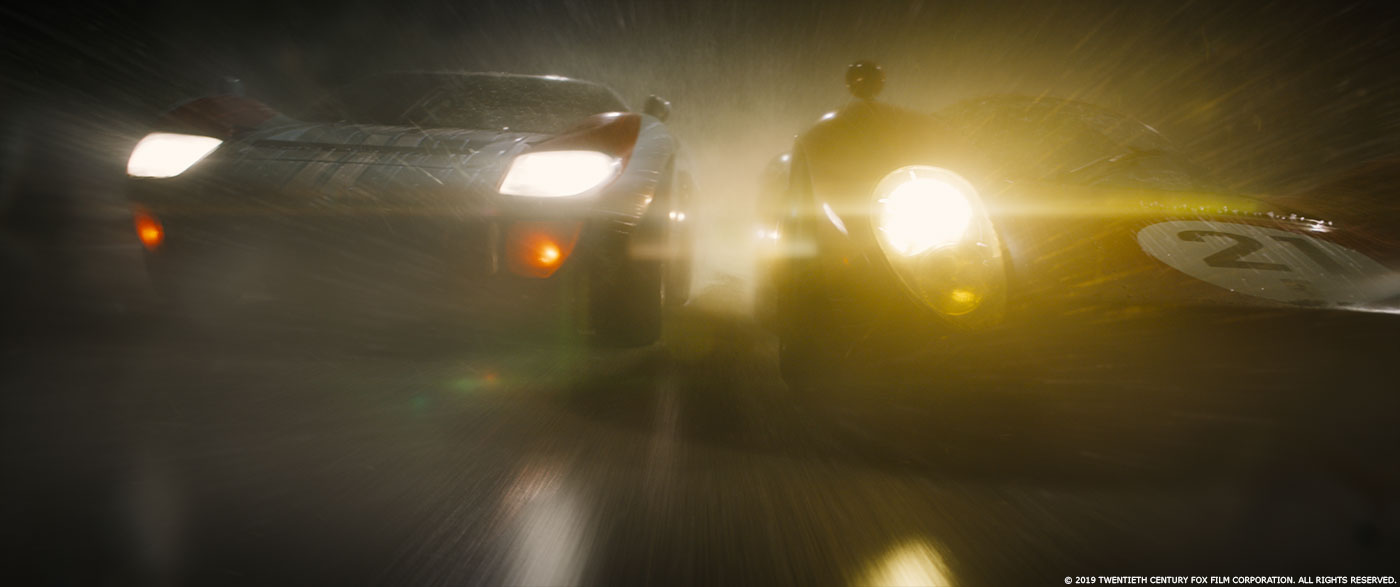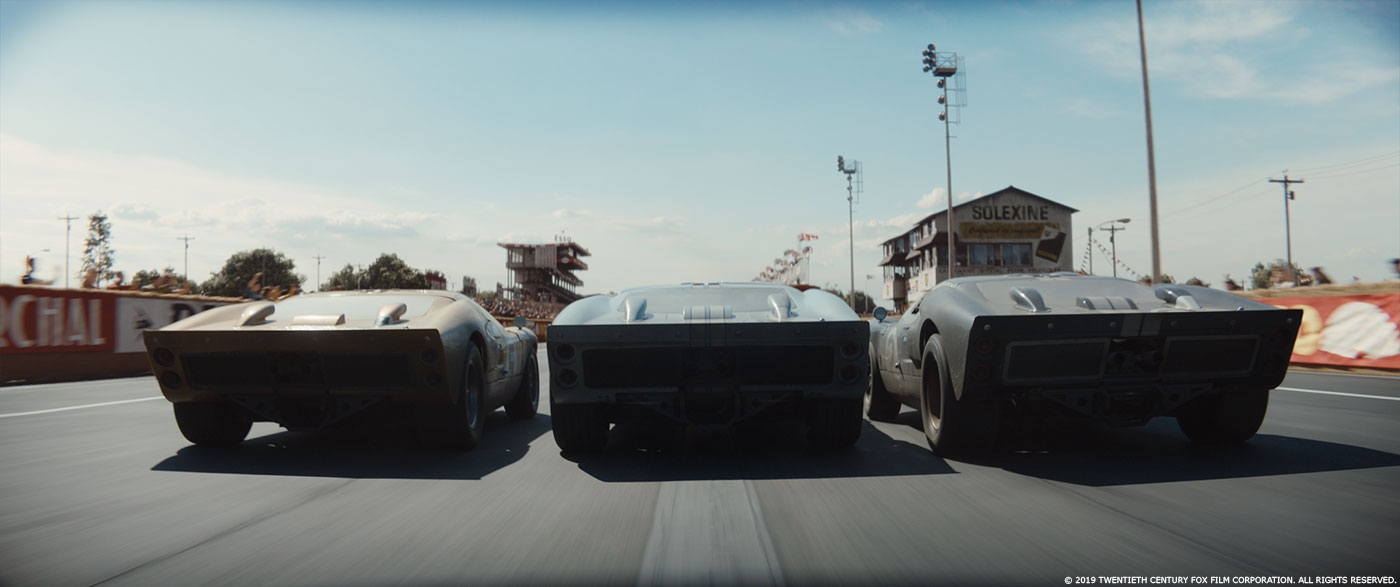In 2017, Olivier Dumont explained the work of Method Studios on KING ARTHUR – LEGEND OF THE SWORD. He then worked on THE NEW MUTANTS.
How did you and Method Studios get involved on this show?
I was coming from THE NEW MUTANTS and met with Joe Conmy (Senior Vice President Visual Effects) and then James Mangold. After sharing my vision with the director, we found out that we had the same goal as how to use and implement the VFX for this movie.
How was the collaboration with director James Mangold?
That was great, Jim is very savvy in all departments and likes to know what’s happening but as soon as he trusts you, you are pretty much free to do what you think is good for the movie. He is also a great backup to get things done. One thing is way above everything, that’s the story telling. Jim is very good at it and never loses sight of it. I remember showing him a shot early in the rain design phase that was very nice looking but was hiding too much the action. Even out of context, Jim immediately told us to shape the atmospherics in order to see more what was going on. I followed this path afterward to make sure everything was always relevant to the story.
What was his expectations and approach about the visual effects?
We were sharing the same approach, trying to make the VFX as invisible as possible during the shoot with as little impact as possible and of course visually during the post- production. I really wanted to make sure we wouldn’t slow-down the shoot as everything was tight schedule-wise. Thanks to a great VFX department and awesome data wranglers, we were running almost everything in parallel to get the elements needed without stopping the momentum of the shoot. And of course, the VFX had to be as invisible as possible on the screen as well. I hope we succeeded there, as all the “none VFX” articles I have read never mentioned once the VFX, which is a big win for this us.
How did you organize the work with your VFX Producer?
All I can say is that the pre-production, the production and the post-production wouldn’t have been this smooth for me without the tremendous work and help from my VFX producer Kathy Siegel. I felt I could just focus on the visuals and methodologies and then let everything else to be organized by Kathy. I have never been taken care of like this in my entire career.
We also had the chance to have a great VFX production supervisor, Beverly Abbott that accompanied me during the shoot of Le Mans in Georgia with the second unit while Kathy stayed with the first unit. Beverly took the producing role there under Kathy supervision and did a great job. Kathy as you must know is also a VFX supervisor and that was key for us to be able to cover the two units. It alleviated the issue of having a second supervisor and deal with briefing everything again and for the director to work with somebody new.
Where was filmed the various parts of the show?
We shot in Los Angeles and surroundings for the most part including Daytona. It was great to be able to shoot also at Willow Springs where Ken Miles and Carroll Shelby were racing in the 60’s. Le Mans pit line was shot at a small airport in Aqua Dulce and was surrounded with hills. However, we had to find locations where we didn’t have to replace everything for the rest of Le Mans track. We went to Georgia where the greenery was more adequate to represent Le Mans and the fictional track was split between three main locations. The Dunlop bridge section was shot at Road Atlanta, a race track still in use, the Mulsanne straight and other non descriptive areas were shot in the countryside of Statesboro and the Esses, Arnage curves and the Maison Blanche (White House) corner was shot in Savannah on a retired race track next to a golf course.
What are the challenges with a period movie like FORD V FERRARI?
The main challenge was probably also the most interesting. We had to do a lot of research to make sure that everything we were building was period time accurate. We needed to gather enough knowledge to tell what had to be fixed or not in any given shot. That included the races of course but also all the other locations. We worked closely with the production designer Francois Audouy that already had a huge catalog of imagery. He went above and beyond to reduce our work load and give us all the directions to follow. The tricky thing is to always doubt your intuition as the 60’s are not that far in time and things you maybe thought didn’t exist did and vice-versa. Then comes the continuity, our job was also to help the editorial department cut things together that sometimes weren’t meant to, like re-skinning or adding cars to make the edit work between shots. Of course, a huge work has been done to make all the VFX as invisible as possible.
Can you tell us more about the previs and postvis process?
Previs was a huge part of the design of races. We worked with Clint Reagan (previs supervisor at Halon at the time) that had already done several movies with James Mangold. It was a huge advantage. We had to take the previs with us to shoot in Atlanta with the second unit directed by Darrin Prescott while James Mangold was shooting the main story in Los Angeles. It had therefore to be as accurate as possible. Of course things changed as we went to post-production but the main story lines were there and the second unit did a great job getting the shots for the cut.
Postvis has been also done by Halon under the supervision of Zack Wong and helped a lot with the communication between editorial and the VFX department. They could test things out very quickly to see if certain scenes would work or not. I used postvis also to work out the continuity throughout the races by adding cars where they should be or re- skinning them as needed. We had then all the elements and timings to forward to the vendors avoiding the usual back and forth and save a lot of time that way.
Can you elaborates about the CG cars creation and animation?
We cyber-scanned and photographed pretty much all the cars in the movie. You never know when something will break and you’ll have to replace it by a CG version of it. We already knew some shots would be all CG and we prepped carefully the models for those moments. Then we pulled the other models as needed.
Method Studios under the VFX supervision of Dave Morley for Le Mans and Rising Sun Pictures lead by VFX supervisor Malta Sarnes for Daytona were the main companies to build the CG cars. We started with medium resolution and push it to accommodate certain close- up shots.The textures and shaders were created of pictures taken under different lighting setups and different level of dirt. In a 24 hour race, the cars get quite dirty.
The animations from both company have been dead on from the start using the proper rigs for the cars and so on. Despite having so much references, I was expecting a lot more back and forth to get it right but the two companies did a really great job handling the car animations.
How did you handle the cars animations?
The process was to scrutinize the practical references we shot and compare them to the CG animations. Besides adding some imperfections and vibrations here and there, my work for that part had been pretty simple thanks to talented artists at Method Studios and Rising Sun.
How was filmed the various driving shots featuring the actors?
Jim and I wanted to shoot as much as possible in the open air to get the right lighting conditions but also to allow the actor to feel and react to the car. We used for that two special vehicles, the “Biscuit” and the “Buck”. The Biscuit is named after another vehicle that was created for the movie SEABISCUIT. It was some kind of a very low trailer with a stunt driver front seat. With this vehicle, we could shoot the front and profiles of the actor. We had then to replace most of the backgrounds. The “Buck” was used to shoot the opposite way mostly over the actors shoulder with the stunt driver being at the back and above the dummy half car shell.
Shots that needed more precisions or a more direct communication from the director couldn’t be achieved that way. For those, we set up a green screen stage with LED panels and moving lighting rigs to simulate the outside. The LED panels were fed with moving imagery taken with a 360o camera that we used for both to get plate for this situation but also to get moving HDRIs for the CG cars. The stage could accommodate up to 3 cars in order to get the shots were you see Ken Miles head to head with Bandini or at the end when he is joined by the two other GT40s. The cars were really just shells rigged on air cushion and were puppeteered, being manually pushed and pulled. As we didn’t have the means and time to set up a full micro LED stage, I knew it wouldn’t light the car nor get the reflections right. So, working closely with the director of photography Phedon Papamichael we focused on getting the lighting working for the actor and the inside of the car. The shells would be then replaced in post-production by their CG counterparts using the moving HDRIs as a base for the CG lighting.
How did you create the various background plates for the driving shots?
We made another specific vehicle for the plates that could go fast enough to prevent too much re-speed. This vehicle was basically a chassis with a rig made of tubes on top of it. We could then get the specific angles with an array of cameras. We would use then the stitched output for the inside shots. We also used that vehicle to mount the 360o cameras to capture pseudo moving HDRis (shooting in log space to get as much lighting information as possible) and also to get the plates to feed the led panels on the green screen stage.
Can you tell us more about the cars textures creation?
As described before, we took a lot of pictures of the different conditions the cars had to run with. The cars had to run during 24 hour races and therefore, their level of dirt would increase throughout the race We also took pictures under different lighting conditions. The vendors then had to convert that into usable textures either by using the pictures or recreating them to get a neutral version of it.
How did you work with the SFX and stunts teams?
That was a tight collaboration during the production but also during the pre-production. The main goal for the three department (SFX, stunt and VFX) was to define where it would be practical and where VFX would take over.
The discussion with the stunt team was about knowing on-set how many cars we would need practically for a specific action. Of course we had some breaking happening but we’d rather use a different car practically to shoot the action and then re-skin it in postproduction. That allowed editorial to have the right material right away and for us, to get an already animated body that we would just track the CG version with the right shell on.
We had very early discussions with SFX for the big crash at the Le Mans and also on how to handle the rain on set for the static and moving shots. They came up with a a very clever rig for the rain that could spray water from the front of bumper onto the windshield for the inside shots looking forward. We also prepped giant crane rigs for portions of the track but encounter a problem with the cars as they couldn’t go fast enough due to safety issues. I made then the decision to shut off the big crane rigs as we would have to speed up most the shots. We still had to add water on the road before hand to get the right texture and some reflections to work with. The heat was an issue (shooting in August around Atlanta) as the road would dry very quickly and you would have to choose between risking to see the truck pouring the water in the shot and a dry road… We kept the big cranes for the scenes in the pits to get the right interaction into the foreground. We then had to complete or replace the rain where we added the CG environment.
Which stunt or crash was the most complicated to enhance?
The big crash is at Le Mans while Ken Miles has an issue with his door and going under the Dunlop bridge. We had many discussions with the stunt team and SFX in order to make it work. The goal for James Mangold and I was as always to be as practical as possible. We cut the crash events into 2 sections. The first section was the event leading to the car crashing against the wall and bouncing off it upward and the second event was the car landing and tumbling on the track.
VFX handled the first event creating what would cause the car to go sideways (a blown up tire) and crashing into the wall. SFX and stunts would take care of the second event. They build a sort of a canon mounted on a fast truck to launch the dummy car in the air. The truck had to reach a speed of 70 mph before using the canon. The stunt driver was using a very fast rig car called the Frankenstein where you could mount cameras any where. It was a long preparation and not without scares. The Frankenstein hit once the wall to avoid the bouncing dummy car that went sideways and crashed 2 cameras… Fortunately the stunt driver was safe.
We have blend those two events and enhance the second one by adding details to the dummy car, debris and painting out the canon truck in some of the shots. We also had to replace the Frankenstein car by Miles’ GT40 in one shot needed by marketing for one of the trailers.
How did you create the various environments and especially Daytona and Le Mans?
For Daytona, we knew we wouldn’t be able to really recreate the exact environment especially shooting at the Fontana race track in Los Angeles. There was a big pond at Daytona and no buildings for the pits, just covered spots. The art department took care of the pit side (with some extensions and crowd additions on our end). We focused then more on changing the stand side where we were adding the crowd. We kept the grand stands the way they are even though they are much higher than the ones at Daytona at that time. James wanted a big crowd here. After adding the crowd, we changed the boxes above the stands to make it look like the Daytona ones but same here, for a composition point of view, we took some liberty to make it work more pleasantly with the framing.
For Le Mans, we got a lot of elements to start with from the art department. We still had to complete it with a lot of research on our end to tune some fine details. Fortunately we had access to a huge database of pictures through “L’Automobile Club de L’Ouest” that organizes the 24 hour Le Mans race and their museum. We even went on the INA website (The French National audiovisual institute) to find old footage of the news about the 66 race. We tried to stay true as much as possible for this race. We are pretty close to what existed at the time for the stands and pit areas but we had to make some compromises throughout the track due to the constraint of the shooting locations. We still had to clean up a lot of modern elements, add the crowd and add banners around the track as a base.
How did you create and animate the crowd?
The brief to the vendors (Method Studios and Rising Sun who were respectively taking care of Le Mans and Daytona) was to make sure we could have different level of excitement. From the passive crowd to the final lap cheering and jumping on the track to congratulate the winner(s). We also needed to be able to change the density for the night and the rain time in order to give the feeling that it was a long race and people were moving around. The goal was to get the crowd looking as organic as possible. To that extend, we analyzed the different actions seen on the period time documentaries and made a list of all the animations needed. The result was obtained by mixing those different elements to show a crowd that really belonged there.
Did you want to reveal to us any other invisible effects?
The Yard VFX did a good job at making the dashboard shots. They are all full CG in the movie to accommodate impossible camera angles. We did some face replacement of the stunt drivers, some helmet fixes as the safety ones were much bigger than the originals. We also had obviously, a lot of time period clean up and extensions that I hope won’t be visible. Also many shots were worked on to fix the continuity in the movie like lip syncs and shots that were supposed to be used in other moments. Some car interior shots were for instance touched up to add the seatbelt on the driver as they were meant to be used prior the driver had put them on. All these shots where a good incentive to keep you on your toes and look at all the details. Hopefully they are really invisible…
How did you choose the various VFX vendors?
The main vendor was Method Studios, they had done great environment work previously as well as difficult crowd shots (I had supervised KING ARTHUR: THE LEGEND OF THE SWORD there).
Kathy and I saw that the scope of work would really inflate quickly and in order to ensure the delivery would be on time, we added another big vendor to the mix: Rising Sun came to mind for their consistent work.
We also used The Yard VFX and EDI Effetti Digitali Italiani that are run by people I worked closely with in the past and know that we share the same vision.
We also had a small team in house lead by Mathias Frodin. That allowed us to go fast on the easier shots but also on the shots that required more back and forth on my end to either design or finalize.
How did you split the work amongst these vendors?
Method Studios took care of different sequences like the Ford office green screens and the Ford factory interior extensions throughout the movie but the main one were the Le Mans races (59 and 66).
Rising Sun worked on Willow Springs and Daytona plus a few continuity shots.
The Yard VFX added all the surrounding elements during Henry Ford’s ride in the GT40, and LAX test track in general and also the establishing shots of the Ford headquarter and the Factory view from the office. They also made all the dashboard shots from scratch.
EDI came late on the job but was a great help pushing some compositing shots through while the other vendors were already working hard on the rest.
Can you tell us more about your collaboration with their VFX supervisors?
That was a first time working with Method Studios supervisor Dave Morley and Rising Sun supervisor Malte Sarnes. The collaboration was good and we quickly ended on the same page. I hope though that I gave them enough creative latitude as I know I could be “sometimes” very opinionated when it comes to visuals.
The collaboration with the Yard VFX was simple as I already had a long relationship with the owner and supervisor Laurens Ehrmann. I have to say that, from the get go, the images produced were outstanding.
Which sequence or shot was the most challenging?
We have several full CG shots in the movie that either weren’t planned from the beginning and therefore lacking a bit of practical references or were simply hard to work on due to the level of realism needed.
The establishing on Ford headquarter and the Ford factory were challenging in that sense but also the swoop down at the end of Miles perfect lap at Le Mans. We really had to work hard to push a fully CG shot to look like the rest of the race.
Is there something specific that gives you some really short nights?
Beyond trailer deliveries and temp screenings, the work and communication between all departments (director, editorial and post-production) was so smooth that we could anticipate enough and shift priorities in advance without it becoming a big headache.
What is your favorite shot or sequence?
Very hard to say as I love parts in everything we have done. Of course, I would have love to keep improving some shots. There is one shot though that comes to mind but it is the conjuncture of the Dp’s eye for the camera and lighting and the VFX work. It is when Miles pits at Le Mans to give the GT40 to his co-driver and the camera pans following the car coming and boom down to look up at Miles exiting the car. We placed the grand stand just behind and the composition works great especially under that lighting. I felt in this shot that we had reached the right blending between practical and CG. I love other shots too especially in the rain at Le Mans and Daytona has great stuff too.
What is your best memory on this show?
I am going to sound cheesy but I loved every single bit of it. I learned so much working with James Mangold, Phedon Papamichael (director of photography) and Franc?ois Audouy (production designer) but also with all the other departments like the second unit team (Darrin Prescott, director and Igor Meglic, DP) and the special effect team lead by Mark Byers. A big kudos too to the editorial department that we worked very closely with. It also wouldn’t have the same without the VFX team lead by Kathy Siegel (VFX producer) and including Beverly Abbott (VFX production supervisors) and our coordinators Justin Golden, Hawkins Dubois and Bryant Mudd that made my life so much easier. It was just fun to see a great movie coming to life especially through the synergy of all the departments. I had never witnessed such a collaboration level before.
How long have you worked on this show?
About a year and 3 months.
What’s the VFX shots count?
About 1100 shots.
What was the size of your team?
Counting everybody including the in-house team, we were 13 people.
What is your next project?
I am finishing up X-MEN: NEW MUTANTS that I had started before going onto FORD V FERRARI.
I just hope I’ll get the chance to work with James and his team again.
A big thanks for your time.
WANT TO KNOW MORE?
Method Studios: Official website of Method Studios.
EDI: Dedicated page about FORD V FERRARI on EDI website.
© Vincent Frei – The Art of VFX – 2019


